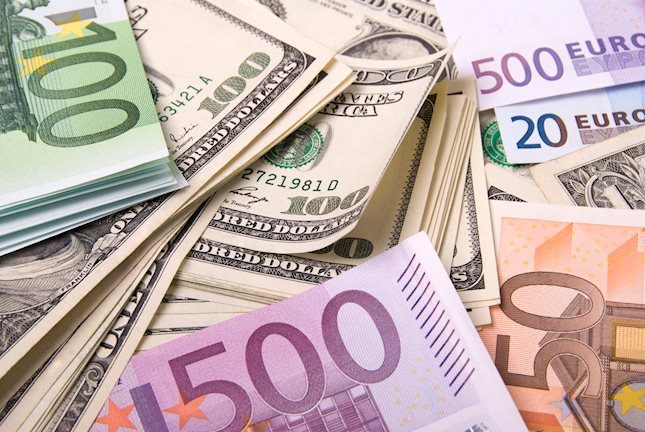- AUD/JPY trades in positive territory in Tuesday’s Asian session, up 0.22% on the day.
- The RBA decided to keep the OCR on hold at 4.35% at its November meeting on Tuesday.
- The US presidential election uncertainty might cap the upside for the cross.
The AUD/JPY cross gains traction to near 100.40 during the Asian trading hours on Tuesday. The Australian Dollar (AUD) edges higher after the Reserve Bank of Australia (RBA) interest rate decision.
The RBA kept the Official Cash Rate (OCR) on hold at 4.35% following the conclusion of its November policy meeting. The decision came in line with market expectations. The Aussie remains firm following the RBA rate decision.
According to the RBA Monetary Policy Statement, the board members will continue to rely upon the upcoming data and the evolving assessment of risks. The policymaker further stated that the monetary policy will need to be sufficiently restrictive until the central bank is confident that inflation is moving sustainably toward the target range.
Traders will take more cues from the RBA’s updated economic forecasts and Governor Michele Bullock’s press conference, which might offer some insight into the interest rate outlook.
On the other hand, the uncertainty surrounding the US presidential election could boost the safe-haven currency like the Japanese Yen (JPY) and cap the upside for the cross. Additionally, less dovish remarks from BoJ Governor Kazuo Ueda could underpin the JPY in the near term. "Many market players had bet that the next rate hike will come in the January-March quarter next year. But he sounded as if he left open the chance of a December hike," said Hiroshi Watanabe, senior economist at Sony Financial Group.
RBA FAQs
The Reserve Bank of Australia (RBA) sets interest rates and manages monetary policy for Australia. Decisions are made by a board of governors at 11 meetings a year and ad hoc emergency meetings as required. The RBA’s primary mandate is to maintain price stability, which means an inflation rate of 2-3%, but also “..to contribute to the stability of the currency, full employment, and the economic prosperity and welfare of the Australian people.” Its main tool for achieving this is by raising or lowering interest rates. Relatively high interest rates will strengthen the Australian Dollar (AUD) and vice versa. Other RBA tools include quantitative easing and tightening.
While inflation had always traditionally been thought of as a negative factor for currencies since it lowers the value of money in general, the opposite has actually been the case in modern times with the relaxation of cross-border capital controls. Moderately higher inflation now tends to lead central banks to put up their interest rates, which in turn has the effect of attracting more capital inflows from global investors seeking a lucrative place to keep their money. This increases demand for the local currency, which in the case of Australia is the Aussie Dollar.
Macroeconomic data gauges the health of an economy and can have an impact on the value of its currency. Investors prefer to invest their capital in economies that are safe and growing rather than precarious and shrinking. Greater capital inflows increase the aggregate demand and value of the domestic currency. Classic indicators, such as GDP, Manufacturing and Services PMIs, employment, and consumer sentiment surveys can influence AUD. A strong economy may encourage the Reserve Bank of Australia to put up interest rates, also supporting AUD.
Quantitative Easing (QE) is a tool used in extreme situations when lowering interest rates is not enough to restore the flow of credit in the economy. QE is the process by which the Reserve Bank of Australia (RBA) prints Australian Dollars (AUD) for the purpose of buying assets – usually government or corporate bonds – from financial institutions, thereby providing them with much-needed liquidity. QE usually results in a weaker AUD.
Quantitative tightening (QT) is the reverse of QE. It is undertaken after QE when an economic recovery is underway and inflation starts rising. Whilst in QE the Reserve Bank of Australia (RBA) purchases government and corporate bonds from financial institutions to provide them with liquidity, in QT the RBA stops buying more assets, and stops reinvesting the principal maturing on the bonds it already holds. It would be positive (or bullish) for the Australian Dollar.
Information on these pages contains forward-looking statements that involve risks and uncertainties. Markets and instruments profiled on this page are for informational purposes only and should not in any way come across as a recommendation to buy or sell in these assets. You should do your own thorough research before making any investment decisions. FXStreet does not in any way guarantee that this information is free from mistakes, errors, or material misstatements. It also does not guarantee that this information is of a timely nature. Investing in Open Markets involves a great deal of risk, including the loss of all or a portion of your investment, as well as emotional distress. All risks, losses and costs associated with investing, including total loss of principal, are your responsibility. The views and opinions expressed in this article are those of the authors and do not necessarily reflect the official policy or position of FXStreet nor its advertisers. The author will not be held responsible for information that is found at the end of links posted on this page.
If not otherwise explicitly mentioned in the body of the article, at the time of writing, the author has no position in any stock mentioned in this article and no business relationship with any company mentioned. The author has not received compensation for writing this article, other than from FXStreet.
FXStreet and the author do not provide personalized recommendations. The author makes no representations as to the accuracy, completeness, or suitability of this information. FXStreet and the author will not be liable for any errors, omissions or any losses, injuries or damages arising from this information and its display or use. Errors and omissions excepted.
The author and FXStreet are not registered investment advisors and nothing in this article is intended to be investment advice.
Recommended content
Editors’ Picks

EUR/USD: The bearish outlook remains intact below 1.0900
The EUR/USD pair remains firmer near 1.0880 during the early European session on Tuesday. The uncertainty surrounding the US presidential election outcome weighs on the Greenback and provides some support to the pair.

GBP/USD holds steady near 1.2950 as traders await US presidential election result
The GBP/USD pair trades flat near 1.2950 during the early Tuesday. Traders will closely monitor the outcome of the US presidential election. On Thursday, the attention will shift to the Bank of England and the US Federal Reserve monetary policy decisions.

Gold price recovers early lost ground to over one-week low amid US election concerns
Gold price slides to a one-week low amid some repositioning trades ahead of the US election. Fed rate cut bets, falling US bond yields and subdued USD demand help limit the downside. Middle East tensions also offer support to the XAU/USD and contribute to the modest bounce.

Trump-inspired memecoin MAGA shows bullish on-chain metrics ahead of US elections
MAGA trades slightly down to around $3.4 on Tuesday after rallying more than 20% since Sunday. The former President Donald Trump-based memecoin is poised for further gains as daily active addresses and network growth metrics rise, signaling increased network usage and adoption.

US presidential election outcome: What could it mean for the US Dollar? Premium
The US Dollar has regained lost momentum against its six major rivals at the beginning of the final quarter of 2024, as tensions mount ahead of the highly anticipated United States Presidential election due on November 5.

Best Forex Brokers with Low Spreads
VERIFIED Low spreads are crucial for reducing trading costs. Explore top Forex brokers offering competitive spreads and high leverage. Compare options for EUR/USD, GBP/USD, USD/JPY, and Gold.